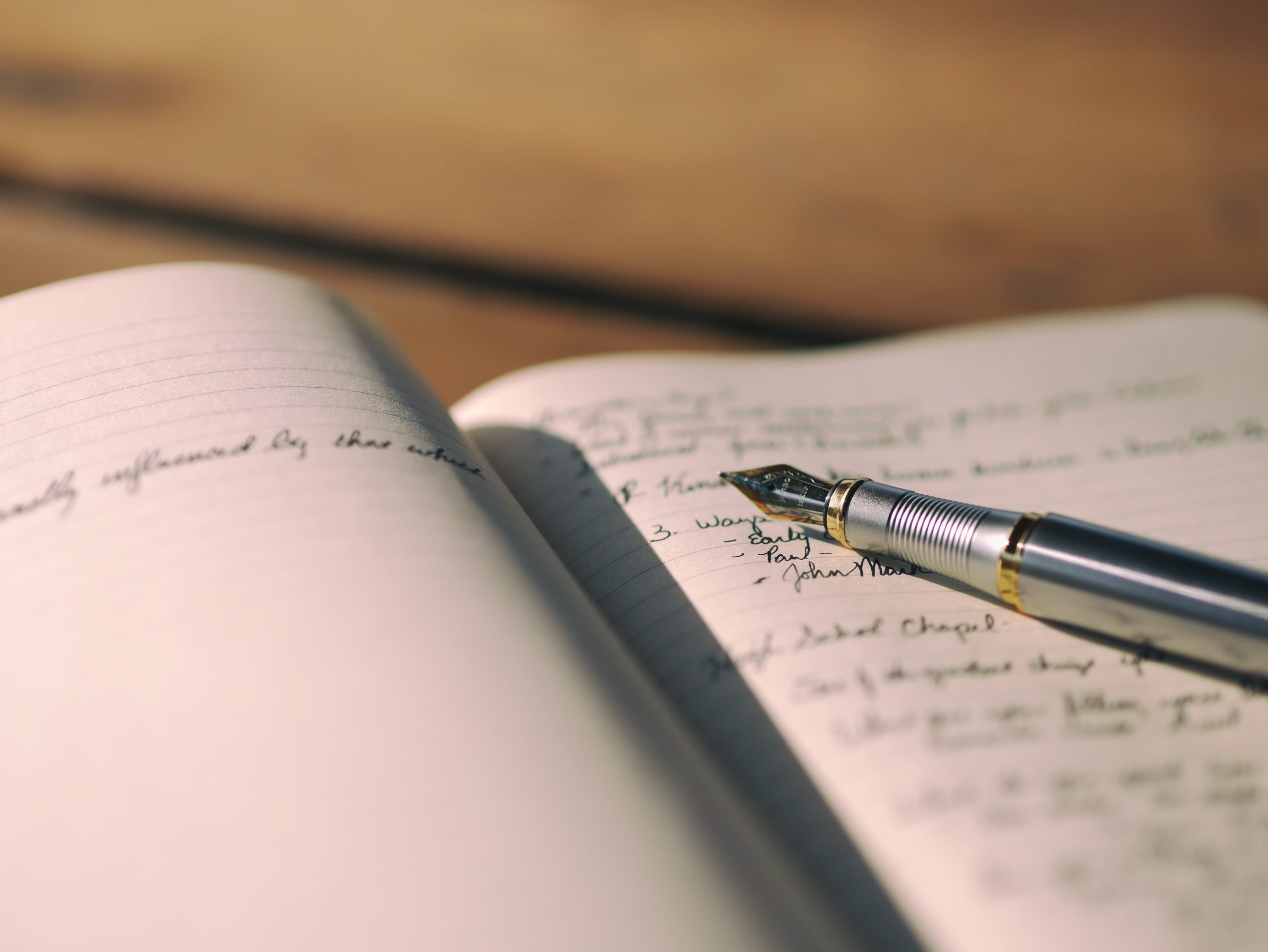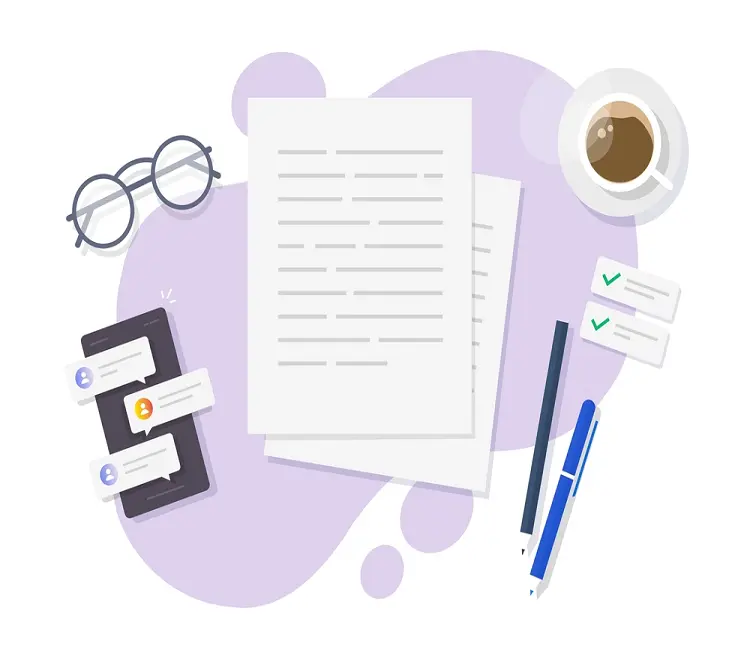Writing an essay is an essential skill a student must master to succeed academically and professionally. An essay is a piece of writing that presents an argument or discusses a particular topic. Whether you’re writing a persuasive, narrative, or informative essay, the following steps will help you write a well-structured, compelling one.
Choose a Topic:
The first step in writing an essay is to choose a topic. Choose a topic that interests you or that you have been assigned. Ensure that you clearly understand the topic and what is expected of you. If you are unsure, seek clarification from your instructor or supervisor.
Research:
Once you have chosen your topic, it’s time to research. Gather information from credible sources such as academic journals, books, and reliable websites. Take notes and organise your research for easy reference later. Ensure that you are using current and relevant sources.
Create an Outline:
An outline is a roadmap for your essay. It helps you organise your ideas and thoughts and logically flow your writing. Create an outline that includes an introduction, body, and conclusion. Within the body, break down your essay into sections and include the main points you want to make in each section.
Write the Introduction:
The introduction is the first paragraph of your essay, setting the tone for the rest of the essay. It should be engaging and provide background information on your topic. It should also include your thesis statement, a concise statement summarising your essay’s main point.
Write the Body:
The body of your essay should consist of several paragraphs, each presenting a unique idea that supports your thesis statement. Use evidence from your research to back up your arguments. Ensure that each paragraph flows logically from one to the next and that there is a clear transition between paragraphs.
Write the Conclusion:
The conclusion is the last paragraph of your essay, and it’s an opportunity to leave a lasting impression on the reader. It should summarise your main points and restate your thesis statement. It’s also an opportunity to provide recommendations or suggest further research.
Edit and Proofread:
Once you have finished writing your essay, take some time to edit and proofread it carefully. Check for grammatical errors, spelling mistakes, and sentence structure. Ensure that your essay is well-structured and has a logical flow of ideas. Having someone else read your essay is also a good idea to get a fresh perspective.
Format and Submit:
Follow the formatting guidelines your instructor or supervisor provided and ensure you submit your essay on time. Remember to include a title page, reference page, and other required components.
.
Conclusion:
In conclusion, writing an essay is a process that requires careful planning and execution. By following these steps, you can write a well-structured, compelling essay demonstrating your understanding of the topic and ability to articulate your ideas effectively.
Understanding the Essay Prompt: Key Steps to Begin
Understanding the essay prompt is an essential step in writing a successful essay. The essay prompt is the question or topic you are asked to write about, and it sets the tone and direction for your writing. Whether you are writing a college essay, an entrance essay, or an exam essay, following these key steps can help you understand the essay prompt and begin writing.
Read the Prompt Carefully:
The first step in understanding the essay prompt is to read it carefully. Read the prompt multiple times to ensure you understand what is being asked of you. Look for keywords and phrases that give you a clue as to what the essay should be about.
Identify the Type of Essay:
Identifying the type of essay you are being asked to write is critical. Is it a persuasive essay, an argumentative essay, or an informative essay? Understanding the type of essay will help you determine the appropriate tone, structure, and approach for your writing.
Analyse the Prompt:
Analysing the prompt involves breaking it down into smaller parts. Look for the key components of the prompt, such as the question being asked, the main idea or theme, and any specific instructions or requirements. Make notes of the essential points to help guide your writing.
Brainstorm Ideas:
Brainstorming ideas is an essential step in writing an essay. Once you have analysed the prompt, start brainstorming ideas that you can use in your writing. Consider what you already know about the topic and what you need to research. Write down any ideas that come to mind, and consider different angles or perspectives to approach the essay.
Create an Outline:
Creating an outline is an excellent way to organise your thoughts and ideas. Use the key components of the prompt and your brainstorming notes to create an outline. An outline will help you structure your essay and ensure your writing flows logically.
Research:
Research is an essential step in writing an essay. Use credible sources such as academic journals, books, and reliable websites to gather information on your topic. Ensure that you are using current and relevant sources.
Write the Essay:
Once you have analysed the prompt, brainstormed ideas, created an outline, and conducted research, it’s time to start writing. Use your outline as a guide and ensure your writing is clear, concise, and logical. Use evidence from your research to support your arguments and ensure that you follow the appropriate format and citation style.
Conclusion:
In conclusion, understanding the essay prompt is essential for a successful essay. Follow these key steps to analyse the prompt, brainstorm ideas, create an outline, conduct research, and write your essay. With these steps, you’ll be well on your way to writing an essay demonstrating your understanding of the topic and ability to articulate your ideas effectively.
Conducting Thorough Research: Gathering Relevant Information
Conducting thorough research is a critical step in writing an academic paper. Gathering relevant and reliable information is essential to develop a well-supported argument and demonstrate your knowledge. Here are some tips to help you conduct thorough research and gather the right information for your paper.
Develop a Clear Research Question or Thesis Statement:
Before you begin your research, it’s important to clearly understand the research question or thesis statement you are trying to address. This will help guide your research and ensure you gather relevant information. The research question should be specific and focused, while the thesis statement should be clear and concise, outlining your paper’s main argument.
Use a Variety of Sources:
It’s important to use a variety of sources when conducting research. This can include academic journals, books, reputable websites, and interviews with experts in the field. Using a variety of sources helps to ensure that you are getting a well-rounded perspective on the topic.
Evaluate the Credibility of Sources:
Not all sources are created equal, and it’s important to evaluate the credibility of sources before using them in your paper. Look for sources that experts in the field write, are peer-reviewed, and come from reputable sources. Be wary of sources that are biased or have a specific agenda.
Take Detailed Notes:
As you conduct your research, it’s important to take detailed notes. This can include quotes from sources, key points, and ideas you want to explore further. Organise your notes in a way that makes sense to you, such as by topic or source.
Analyse and Synthesise the Information:
After you have gathered all the information, it’s important to analyse and synthesise it to develop a well-supported argument. Look for patterns and themes in the information and identify areas with conflicting opinions or gaps in knowledge. Use this information to develop your argument and support your thesis statement.
Properly Cite Your Sources:
Finally, it’s important to properly cite your sources to avoid plagiarism and give credit to the original author. Use the appropriate citation style for your field, such as APA or MLA, and include a reference page or bibliography at the end of your paper.
Conclusion:
In conclusion, conducting thorough research is essential to developing a well-supported argument and demonstrating knowledge. Use various sources, evaluate the credibility of sources, take detailed notes, analyse and synthesise the information, and properly cite your sources to ensure that you are gathering relevant and reliable information for your paper.
Organising Your Thoughts: Creating an Essay Outline
Writing an essay can be daunting, but creating an outline can make the process much easier. An outline is a plan that organises your thoughts and ideas into a clear and concise structure. Here are some tips for creating an essay outline.
Start with Your Thesis Statement:
Your thesis statement is the central argument of your essay. It should be clear and concise and convey your essay’s main idea. Start your outline by writing your thesis statement at the top of the page.
Create a Main Point for Each Paragraph:
The body of your essay should support your thesis statement. Each paragraph should focus on a single main point that supports your thesis. Write each main point as a separate heading in your outline.
Use Supporting Evidence for Each Main Point:
Each main point should be supported by evidence. This can include quotes, statistics, or examples that help to prove your argument. Write down the supporting evidence for each main point under the heading.
Organise Your Main Points in a Logical Order:
Once you have identified your main points and supporting evidence, organise them logically. This can be done chronologically, spatially, or by importance. Consider the flow of your argument and ensure that your main points are presented in a way that makes sense.
Add a Conclusion:
Your conclusion should summarise your argument and restate your thesis statement. Write a brief conclusion under a separate heading in your outline.
Review and Revise Your Outline:
Once you have created your outline, please review it to ensure it makes sense and is well-organised. Revise the outline as necessary to ensure that your argument flows logically.
An outline can help you organise your thoughts and ideas and ensure your essay is well-structured. Start with your thesis statement, create a main point for each paragraph, use supporting evidence for each main point, organise your main points logically, add a conclusion, and review and revise your outline. By following these tips, you can create an effective essay outline and make the writing process much easier.
Crafting a Captivating Introduction: Hooking Your Reader
The introduction is one of the most important parts of your essay, as it sets the tone for the entire piece and captures your reader’s attention. Crafting a captivating introduction is crucial to hooking your reader and encouraging them to keep reading. Here are some tips for creating a compelling introduction.
Start with a Hook:
A hook is a sentence or phrase that captures your reader’s attention and draws them into your essay. You can use many hooks, including anecdotes, questions, quotes, or surprising facts. Choose a hook relevant to your topic that will resonate with your reader.
Provide Background Information:
After you have hooked your reader, providing background information on your topic is important. This helps set the context for your essay and gives your reader a better understanding of what you will discuss. Keep the background information brief and to the point.
State Your Thesis Statement:
Your thesis statement is the central argument of your essay, and it should be included in your introduction. State your thesis clearly and concisely so that your reader knows what to expect from your essay.
Preview Your Main Points:
In addition to stating your thesis, you can preview the main points you will discuss in your essay. This helps to give your reader an idea of the structure of your essay and what they can expect to learn from it.
Keep it Concise:
While creating a compelling introduction is important, it’s also important to keep it concise. Your introduction should be a maximum of a few paragraphs long and should focus on introducing your topic and thesis. Avoid going into too much detail or including information not directly relevant to your essay.
Revise and Edit:
After you have written your introduction, revise and edit it to ensure it is clear, concise, and effective. Ensure that your hook is attention-grabbing, your thesis is clear, and your main points are effectively previewed.
Conclusion:
In conclusion, crafting a captivating introduction is essential to hooking your reader and encouraging them to keep reading your essay. Use a hook to capture your reader’s attention, provide background information, state your thesis statement, preview your main points, keep it concise, and revise and edit as necessary. By following these tips, you can create a compelling introduction to set the tone for your essay.
Developing Strong Arguments: Supporting Your Thesis Statement
Developing strong arguments is essential to support your thesis statement in an essay. Arguments are the backbone of any essay and are used to persuade your readers that your thesis is valid and supported by evidence. Here are some tips for developing strong arguments to support your thesis statement.
Start with Research:
Before you begin developing your arguments, it’s important to research your topic. This will help you identify evidence supporting your thesis statement and better understand your topic. Use reputable sources such as books, academic articles, and reliable websites to gather evidence.
Identify Key Points:
Once you have researched, identify the key points supporting your thesis statement. These key points should be based on the evidence you have gathered and should be relevant to your topic. Make sure that each key point is linked to your thesis statement.
Use Supporting Evidence:
Use supporting evidence to back up your key points. This can include direct quotes, statistics, or examples that help to prove your argument. Ensure your evidence is relevant, credible, and supports your key points.
Address Counterarguments:
Addressing counterarguments is an important part of developing strong arguments. This means considering alternative viewpoints or objections to your argument and addressing them in your essay. This demonstrates that you have considered different perspectives and strengthens your argument.
Organise Your Arguments:
Organise your arguments logically and coherently. This can be done chronologically, spatially, or by importance. Consider the flow of your argument and ensure that your key points are presented in a way that makes sense.
Use Transitions:
Using transitions is an important part of developing strong arguments. Transitions help to connect your ideas and make your argument flow smoothly. Use words and phrases such as “in addition,” “furthermore,” and “on the other hand” to connect your key points.
Revise and Edit:
After you have developed your arguments, it’s important to revise and edit them to ensure they are clear, concise, and effective. Ensure your arguments are well-supported, address counterarguments, and flow logically.
Conclusion:
In conclusion, developing strong arguments is essential to support your thesis statement in an essay. Start with research, identify key points, use supporting evidence, address counterarguments, organise your arguments, use transitions, and revise and edit. By following these tips, you can develop strong arguments that support your thesis statement and persuade your readers of your argument.
Structuring Body Paragraphs: Presenting Coherent Ideas
The body paragraphs of an essay are where you present your arguments and provide evidence to support your thesis statement. How you structure your body paragraphs can greatly impact the clarity and coherence of your ideas. Here are some tips for structuring body paragraphs to present coherent ideas.
Use a Topic Sentence:
Start each body paragraph with a clear topic sentence that summarises the paragraph’s main idea. This will help your reader understand what the paragraph is about and how it relates to your thesis statement.
Provide Evidence:
After you have introduced your main idea, provide evidence to support it. This can include examples, statistics, or direct quotes. Make sure that your evidence is relevant and supports your topic sentence.
Analyse Your Evidence:
Make sure to present your evidence; analyse it. Please explain how your evidence supports your main idea and how it connects to your thesis statement. This will show your reader that you have thought critically about your evidence and deeply understand your topic.
Use Transition Words:
Using transition words is an important part of structuring body paragraphs. Transition words help to connect your ideas and make your argument flow smoothly. Use words and phrases such as “however,” “therefore,” and “in contrast” to connect your ideas.
Stick to One Idea Per Paragraph:
Each body paragraph should focus on one main idea. This will help to keep your ideas organised and make your essay more coherent. If you find yourself cramming multiple ideas into one paragraph, consider breaking it up into multiple paragraphs.
Follow a Logical Order:
Make sure that your body paragraphs follow a logical order. This can be done chronologically, spatially, or by importance. Consider the flow of your argument and ensure that your ideas are presented in a way that makes sense.
Use Transitional Sentences:
Using transitional sentences is another way to connect your ideas and make your argument more coherent. Transitional sentences can bridge the gap between your ideas and make the transition from one paragraph to the next smoother.
Conclude Each Paragraph:
Each body paragraph should have a concluding sentence that summarises the paragraph’s main idea and connects it to your thesis statement. This will reinforce your argument and remind your reader of the overall point of your essay.
Conclusion:
In conclusion, structuring body paragraphs is important in presenting coherent ideas in an essay. Use a topic sentence, provide evidence, analyse your evidence, use transition words, stick to one idea per paragraph, follow a logical order, use transitional sentences, and conclude each paragraph.
Using Appropriate Evidence: Citing Sources Effectively
Using appropriate evidence to support your arguments is important when writing an essay. However, it is equally important to cite your sources effectively. Citing sources gives credit to the original author and adds credibility to your essay. Here are some tips for using appropriate evidence and citing sources effectively.
Choose Reliable Sources:
Before citing any sources, it is important to ensure they are reliable. Use reputable and reliable sources, such as peer-reviewed journals, books from reputable publishers, and government websites. Avoid using sources from questionable or biased sources, such as personal blogs or unverified social media posts.
Use Direct Quotes Sparingly:
While direct quotes can be effective, they should be used sparingly. Overusing direct quotes can make your writing appear lazy and unoriginal. Instead, try to paraphrase or summarise the information in your own words.
Include In-Text Citations:
When using evidence from sources, make sure to include in-text citations. In-text citations credit the original author and help readers locate the source in the reference list. The format of in-text citations may vary depending on the citation style required for your essays, such as APA, MLA, or Chicago.
Provide Enough Information in References:
When creating a reference list, provide enough information to help readers locate the source. Depending on the citation style, you may include the author’s name, publication date, title of the work, publication information, and other details.
Use Plagiarism Checkers:
Plagiarism checkers are online tools that help you identify unintentional plagiarism in your essay. Many universities and colleges can access plagiarism checkers, and some are free online. A plagiarism checker can help ensure your writing is original and properly cited.
Check for Accuracy:
Before submitting your essay, double-check your citations for accuracy. Ensure you have cited all the sources you used in your essay and that your citations are formatted correctly. Even minor errors in citations can damage the credibility of your essay.
Conclusion:
In conclusion, using appropriate evidence and citing sources effectively is crucial to writing a successful essay. Choose reliable sources, use direct quotes sparingly, include in-text citations, provide enough information in references, use plagiarism checkers, and check for accuracy. Following these tips ensures your essay is well-supported, credible, and properly cited.
Mastering the Art of Transition: Smoothly Connecting Ideas
Transitioning smoothly between ideas is an essential skill for any writer. It allows your essay to flow cohesively and ensures that your readers can follow your line of thought without feeling disoriented.
However, mastering the art of transition can be challenging, especially for novice writers. This article will explore tips to help you master the art of transition and smoothly connect your ideas.
Use transitional words and phrases:
One of the most effective ways to transition smoothly between ideas is to use transitional words and phrases. Transitional words and phrases connect ideas, sentences, and paragraphs, helping to create a cohesive flow of thought.
Examples of transitional words and phrases include “however,” “in addition,” “furthermore,” “on the other hand,” “in conclusion,” and “therefore.” Use these words and phrases appropriately and sparingly to avoid overusing them and making your writing seem mechanical.
Repeat keywords or phrases:
Another way to transition smoothly is by repeating keywords or phrases from the previous sentence or paragraph. This technique reinforces the previous idea and signals to readers that you’re moving on to a related topic. For example, you might say. The advantages of this technology are clear. The numerous and varied benefits make it a valuable asset to any business.
Use parallel structure:
The parallel structure involves using the same grammatical structure for two or more ideas. This technique creates a sense of balance and symmetry, making it easier for readers to follow your ideas. For example, you might say, “Not only do we need to increase funding for education, but we also need to improve teacher training and provide more resources for students.”
Include transitional sentences:
Transitional sentences are sentences that connect two paragraphs or ideas. They usually summarise the previous paragraph and introduce the next one. Transitional sentences can be especially helpful when transitioning between major sections or topics. For example, you might say, “Now that we’ve discussed the advantages of this technology, let’s turn our attention to its potential drawbacks.”
Use visual aids:
Visual aids like graphs, charts, and diagrams can also help transition smoothly between ideas. Visual aids can provide a clear connection between ideas, making it easier for readers to follow your train of thought. For example, use a chart to show the correlation between funding for education and student performance, then transition to a discussion of teacher training.
Conclusion:
In conclusion, mastering the art of transition is an important skill for any writer. Using transitional words and phrases, repeating keywords or phrases, using parallel structure, including transitional sentences, and using visual aids are all effective techniques for connecting your ideas smoothly. Using these techniques, you can create a cohesive and engaging essay that flows seamlessly from beginning to end.
Writing a Compelling Conclusion: Leaving a Lasting Impression
A conclusion is the final impression that a reader has of your essay. It is your last chance to leave a lasting impression and to make sure that your reader has a clear understanding of your message. In this article, we will discuss tips on writing a compelling conclusion that will leave a lasting impression on your readers.
Summarise your main points:
One effective way to write a compelling conclusion is to summarise your main points. By restating your thesis statement and summarising the key points you have made in your essay, you can remind your reader of the main argument you have presented and help them to understand the significance of your ideas. This technique can reinforce your message and leave a lasting impression on your reader.
Emphasise the importance of your topic:
Another way to write a compelling conclusion is to emphasise the importance of your topic. By highlighting the significance of your topic and explaining why it is relevant to your reader, you can help them to understand the value of your ideas. This technique can also create a sense of urgency and encourage your reader to take action or continue exploring the topic independently.
Offer a call to action:
A call to action is a statement that encourages your reader to take a specific action. By offering a call to action in your conclusion, you can inspire your reader to take action based on the ideas you have presented in your essay. This technique can also create a sense of closure and encourage your reader to reflect on your ideas and continue exploring the topic independently.
Provide a final thought:
Finally, a compelling conclusion can include a final thought or a reflection on your topic. By offering personal insight or a thoughtful reflection on your topic, you can leave a lasting impression on your reader and inspire them to think more deeply about your ideas. This technique can also create a sense of unity and closure, bringing your essay to a satisfying conclusion.
Conclusion:
In conclusion, a compelling conclusion is an essential part of any essay. By summarising your main points, emphasising the importance of your topic, offering a call to action, and providing a final thought, you can leave a lasting impression on your reader and ensure that your message is remembered.
Remember to keep your conclusion concise and to the point and avoid introducing new ideas or information. With these tips, you can write a compelling conclusion that will leave a lasting impression on your readers.
Polishing Your Essay: Editing and Proofreading for Perfection
After completing your essay, it’s important to take the time to edit and proofread it carefully. Editing and proofreading are crucial steps in the writing process that can make a significant difference in the quality of your work. In this article, we will discuss tips on how to polish your essay and ensure it is free of errors and mistakes.
Take a break before editing:
Before you start editing, taking a break from your essay is important. This will give you a fresh perspective and help you to approach your work with a critical eye. Clear your mind and return to your essay with a fresh perspective.
Read your essay aloud:
Reading your essay aloud can help you identify errors and mistakes you may have missed when reading silently. This technique helps you to identify areas of your essay that may need revision or improvement.
Focus on one issue at a time:
Focusing on one issue at a time is important when editing your essay. This could be spelling errors, grammatical mistakes, or issues with the structure and organisation of your essay. By focusing on one issue at a time, you can give each issue the attention it deserves and ensure you get everything important.
Use editing tools:
There are some editing tools available that can help you to identify errors and mistakes in your essay. These tools can include spell checkers, grammar checkers, and plagiarism checkers. While these tools can be helpful, it’s important to remember that they are not infallible and that you should still take the time to review and edit your essay carefully.
Get feedback from others:
Another effective way to polish your essay is to get feedback from others. This could be a friend, family member, or teacher. By getting feedback from others, you can get a fresh perspective on your work and identify improvement areas.
Conclusion:
In conclusion, editing and proofreading are essential steps in the writing process that can make a significant difference in the quality of your work by taking a break before editing, reading your essay aloud, focusing on one issue at a time, using editing tools, and getting feedback from others.
You can polish your essay and ensure it is free of errors and mistakes. Remember to take the time to review your work and approach the editing process critically and carefully. With these tips, you can produce a polished essay that reflects your best work.
By clicking on the following link;
you will be redirected to the page where you can find some beneficial information about Incorporating UK Academic Standards and Expectations in Research Paper Writing









